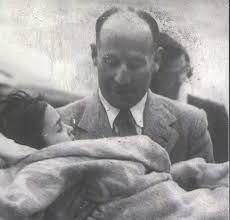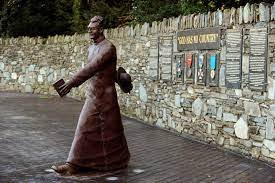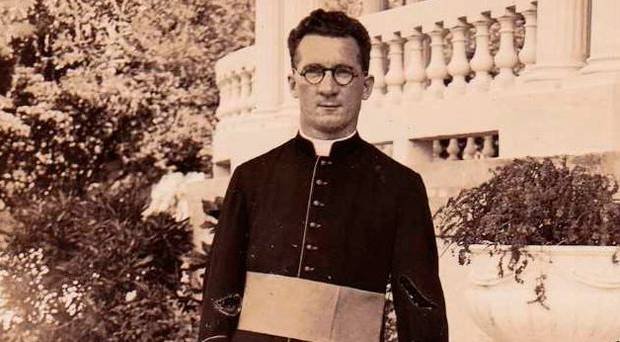Monsignor Hugh O’Flaherty
The ‘Scarlet Pimpernel of the Vatican’
It is estimated that The Organisation and Monsignor Hugh were responsible for saving more than 6,500 people from Nazi concentration and POW (Prisoner of War) camps.
Mgr. O’Flaherty and ‘the Organisation’
Born in Lisrobin, Kiskeam in 1898 to a staunchly Republican family, Monsignor Hugh O'Flaherty grew up in Killarney, and earned his BA degree in Theology. He was ordained in Rome in 1925 and appointed to the Vatican Diplomatic Service, serving in Egypt, Haiti, Santo Domingo and Czechoslovakia before returning to Rome in 1938 to work in the Holy Office.
Mgr. O'Flaherty initially dismissed accounts of Nazi atrocities as Allied propaganda. The Nazis' treatment of Rome's Jewish population transformed his opinions. In the autumn of 1942, he started smuggling and hiding refugees when the Germans and Italians cracked down on prominent Jews and anti-Fascists. Every evening, he stood in the porch of St. Peter's, in plain view of the German soldiers across the piazza.
One of the Jews who approached Mgr. O'Flaherty at his usual post proceeded to unwind a gold chain that went twice around his waist. “My wife and I expect to be arrested at any moment,” said the Jew. “We have no way of escaping. When we are taken to Germany we shall die. But we have a small son; he is only seven and is too young to die. Please take this chain and take the boy for us too. Each link of the chain will keep him alive for a month. Will you save him?” The Monsignor improved upon this plan: he accepted the chain, hid the boy and procured false papers for the parents. At the end of the war, he returned the boy and the chain.
In the spring of 1943, Mgr. O'Flaherty's operation broadened to include escaped British POWs caught behind enemy lines. His fledgling, informal network of contacts was transformed into “The Organisation” – a massive partisan effort to save Jews, soldiers and refugees of many other creeds and nationalities. He hid them in monasteries and convents, at Castel Gandolfo, in his old college of the Propaganda Fide, in his own residence, the German College, and in his network of apartments. He provided them with food, clothing, and money to reimburse the Italian families who risked their lives to hide them.
One of the people who worked closely with Mgr. O'Flaherty daily was John Furman, a Jewish captain in the British Army who had escaped from several POW camps and was later to be awarded the Military Cross. This is how he described the priest whose exploits were celebrated in the 1983 movie “The Scarlet and the Black.”
Monument dedicated to Monsignor Hugh O’Flaherty in Killarney, Ireland.
Portrait of Monsignor Hugh O’Flaherty
His face normally wore a benign, absent-minded, professorial expression, an effect which his spectacles heightened, but the mood could change very quickly and I was frequently to see the kindly twinkle in his eyes displaced by flaming passion whenever he heard of some particularly bestial cruelty perpetrated no matter by whom or against whom.
- John Furman
Learn about other heroic Irish people
-

Mary Elmes
-

Hubert Butler
-

Dr Bob Collis




